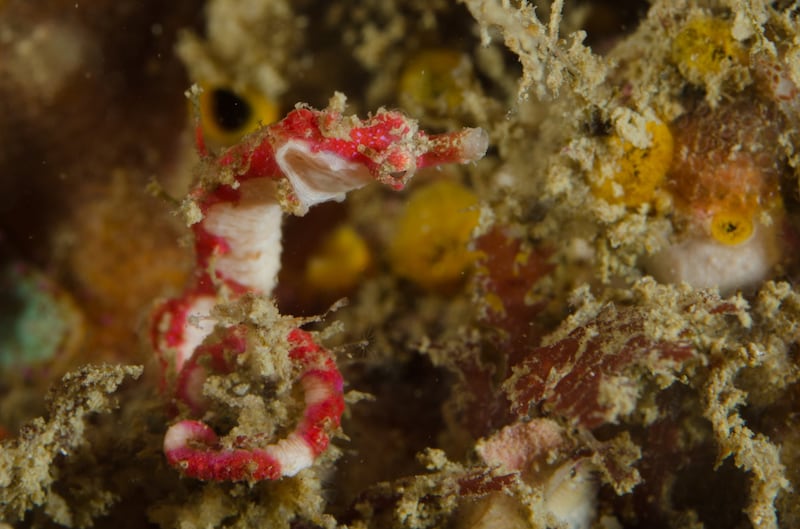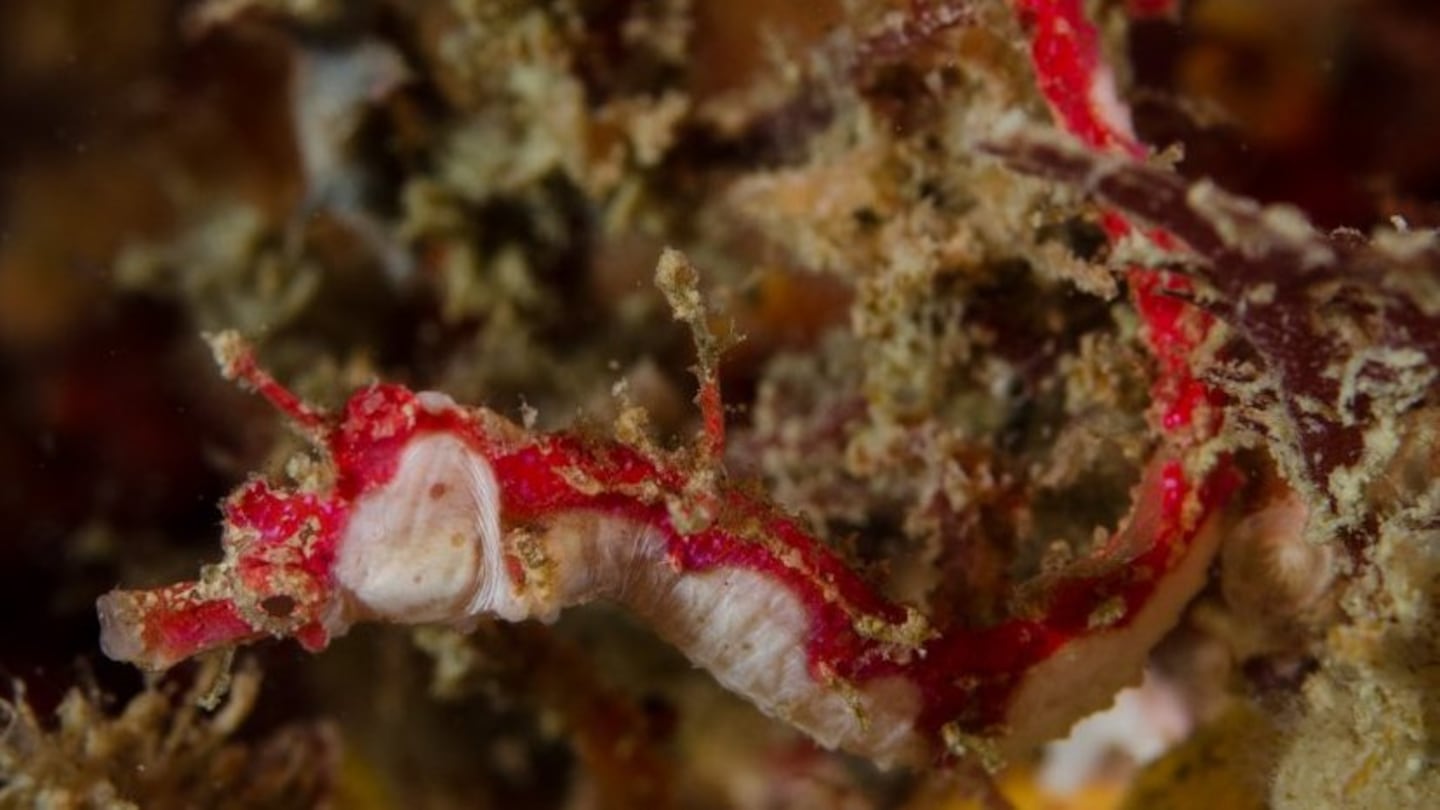The new species Cylix tupareomanaia with the common name of tu pare o manaia or manaia pygmy pipehorse. Image credit Irene Middleton
A new species of pygmy pipehorse, a fish closely related to the seahorse, has been named by kaumātua of Ngātiwai.
The animal has been observed almost entirely within Ngātiwai's rohe and marks the first time an indigenous group has been listed as the naming authority of a new species of animal.
Ngātiwai kaumātua Hori Parata led the group of kaumātua to name the new species as Cylix tupareomanaia.
"The naming of this taonga is significant to Ngātiwai as we know there are stories from our tūpuna about this species, but the original name has been lost as a result of the negative impacts of colonisation," Parata says.
The meaning behind the name
Ngātiwai kaumātua derived the second part of the species’ name "tupareomanaia" which means "the garland of the manaia". Manaia is the Māori name for a seahorse and is also a tupuna (ancestor), a guardian that appears represented as a stylised figure in wood carvings.
It also references the location of the type specimen Tu Pare o Huia (Home Point), near Whangaruru, which translates as "the plume of the huia", a sacred and now-extinct bird in Aotearoa.
The first part of the name, "cylix", is a new genus name and is derived from the Greek and Latin word for a cup or chalice; it refers to the cup-like crest on the top of the head of the new species, a character not observed in other species of pygmy pipehorses from Australia and the Indo-Pacific.
The naming was done in collaboration with biodiversity scientists from Tāmaki Paenga Hira Auckland Museum and the California Academy of Sciences. The co-authors, Graham Short from the California Academy of Sciences and Dr Thomas Trnski from the Auckland Museum, approached kaumātua of Ngātiwai to share in the naming and, as a result, to form part of the species' scientific name forever.
Trnski says, "I feel privileged that we have been able to incorporate mātauranga Māori in the naming of Cylix tupareomanaia and collaborate with Ngātiwai for this taonga of the ocean."

The new species Cylix tupareomanaia with the common name of tu pare o manaia or manaia pygmy pipehorse. Image credit Irene Middleton
A unique species
The manaia pygmy pipehorse is small, with a maximum size of only 6 cm long. They live in fine, turfing seaweed up to 17 m deep. Their colours and small size make them very difficult to see as they blend in perfectly to their habitat.
This is the first pygmy pipehorse discovered in Aotearoa and the group of fishes are unusual in that the males brood eggs in a pouch in their bellies.
"As far as we know, this is the first animal in the world to have the naming authority include a tribal name. It is overdue recognition of traditional knowledge that can contribute to the discovery of new species.”
Ngātiwai are kaitiaki (guardians) of the biodiversity within their rohe, and they regard the marine species as nationally significant taonga.
Parata says, “We are pleased to have gifted this species a new name that asserts the mana of Ngātiwai and would like to thank the kaumātua for their involvement in this very special piece of work.”



